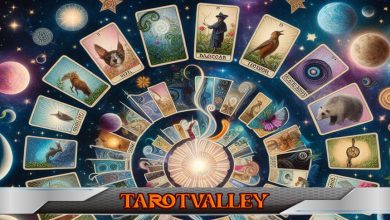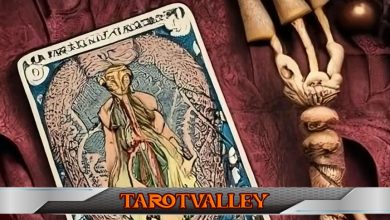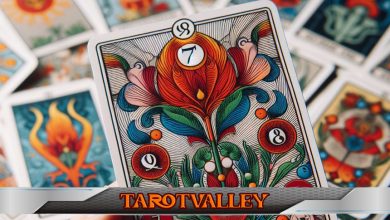
The earliest tarot decks have been probable as easy as stick figures drawn on napkins after a few glasses of chianti. Over time, the designs developed into the intricate and mysterious cards we understand these days.
Improvement of Tarot Symbolism
The essential Arcana and Their Meanings
The main Arcana playing cards are like the A-listing celebrities of the tarot world. Each card has its very own specific character and message, sort of like emojis for the Renaissance crowd.
Fit Symbols and Their importance
The suits in tarot—swords, wands, cups, and pentacles—are like the 4 food groups of the magical world. They each bring their very own flavor to the study, whether it’s reducing confusion or manifesting abundance.
Tarot in Renaissance Europe
Spread of Tarot beyond Italy
Tarot has become the trendiest accent in Renaissance Europe, just like the Birkin bag of the occult scene. It spread quicker than gossip at a royal ball.
The Aristocracy and Tarot: The Tarot de Marseille
The aristocracy of Europe has been all about those tarot lifestyles, in particular the flamboyant French, who popularized the Tarot de Marseille deck. It became the high fashion of tarot decks, suitable for kings and queens.
Influence of Occultism on Tarot
Connection to Hermeticism and Kabbalah
Tarot were given real depth with their connections to Hermeticism and Kabbalah, diving into the esoteric pool like a Renaissance skinny dip. It is like the tarot states, “I’m no longer only a deck of cards; I am a non-secular adventure, baby.”
The Golden sunrise and Tarot Interpretation
The Golden Sunrise, now not only a pretty sunrise, brought an entire new degree of tarot interpretation to the desk. They had been just like the cool children inside the occult scene, adding layers of meaning to the playing cards like a religious parfait.
Evolution of Tarot Readings
Early Divinatory Practices with Tarot
In the early days, human beings used Tarot cards for fortune-telling and divination in search of insights into their lives and futures. Readers would weave tales and interpretations primarily based on the symbolism of the playing cards.
Current Tarot Spreads and Interpretation methods
These days, tarot readings have evolved with a selection of spreads and interpretation methods. From the Celtic cross to the 3-Card unfold, readers have honed those strategies to provide deeper insights and guidance.
Modern-day Tarot Practices
Tarot as a device for Self-mirrored image and personal growth
Many now use Tarot as a tool for self-reflection and personal growth. It serves as a reflection of our inner thoughts and feelings, helping us navigate challenges and find new perspectives.
On-line Tarot Readings and Apps
In the virtual age, Tarot has gone online, with apps and websites presenting digital readings. While convenient, those systems nonetheless capture the essence of traditional readings, providing guidance at our fingertips.
Cultural effect and recognition of Tarot
Mainstream attractiveness of Tarot in famous tradition
Tarot has located its place in the mainstream way of life, with celebrities and influencers embracing its mystique. Its symbolism and appeal have made it a famous device for seekers of non-secular guidance.
Tarot in artwork, style, and Media
Tarot’s fascinating imagery has inspired artists, designers, and filmmakers, performing in artwork, fashion, and media. Its rich, visible language continues to influence and fascinate audiences worldwide.
Debunking Tarot Myths and Misconceptions
Keeping Truth from Fiction in Tarot History
Let’s bust some myths! Tarot’s origins are rooted in records, not hocus-pocus. Through delving into its real origins, we can appreciate the artistry and symbolism at the back of those mystical playing cards.
Addressing common misconceptions about Tarot studying
Tarot analysis isn’t always about predicting the future with a crystal ball. It is a tool for introspection and guidance, supplying insights to navigate existence’s twists and turns. Let’s debunk the misconceptions and embody Tarot for what it surely is!As we conclude our exploration of the origins of Tarot, it will become clear that these mystical playing cards maintain a timeless fascination that continues to resonate with human beings around the world. Whether considered a mirror to the subconscious, a device for non-secular perception, or without a doubt a supply of notions, Tarot’s enduring legacy underscores its enduring relevance in the present day. With the aid of expertise in the historic roots and cultural significance of Tarot, we benefit from a deeper appreciation for its profound effect on people and society, inviting us to embody its information and symbolism in our quest for self-discovery and personal boom.
FAQ
1. Are Tarot playing cards connected to any precise faith or belief machine?
2. Can each person discover ways to study Tarot by playing cards, or is it a talent reserved for psychics and mediums?
3. Is Tarot studying a form of fortune-telling, or is it more approximately self-mirrored image and guidance?
4. How correct are Tarot readings, and must they be taken significantly as a form of guidance?



